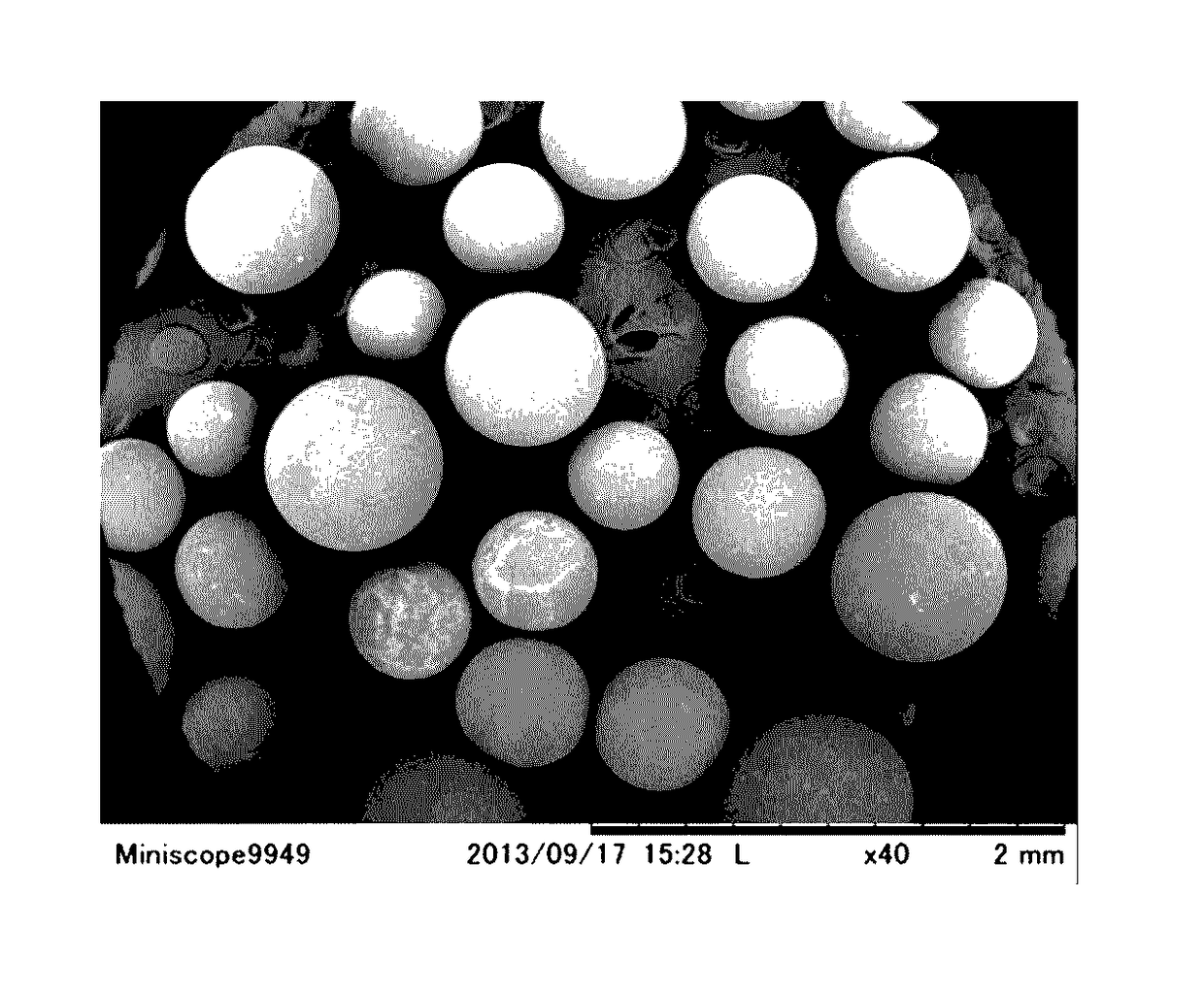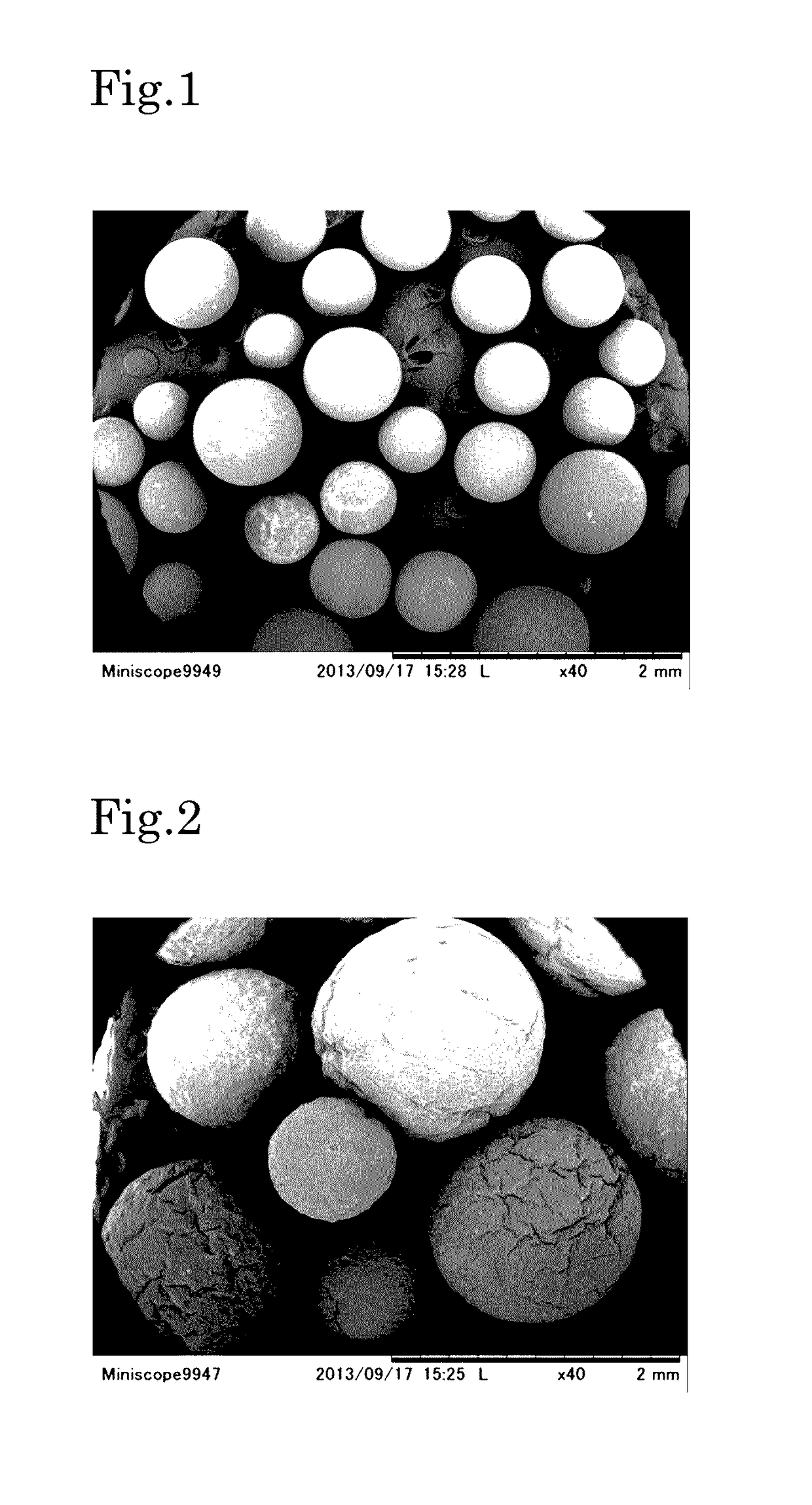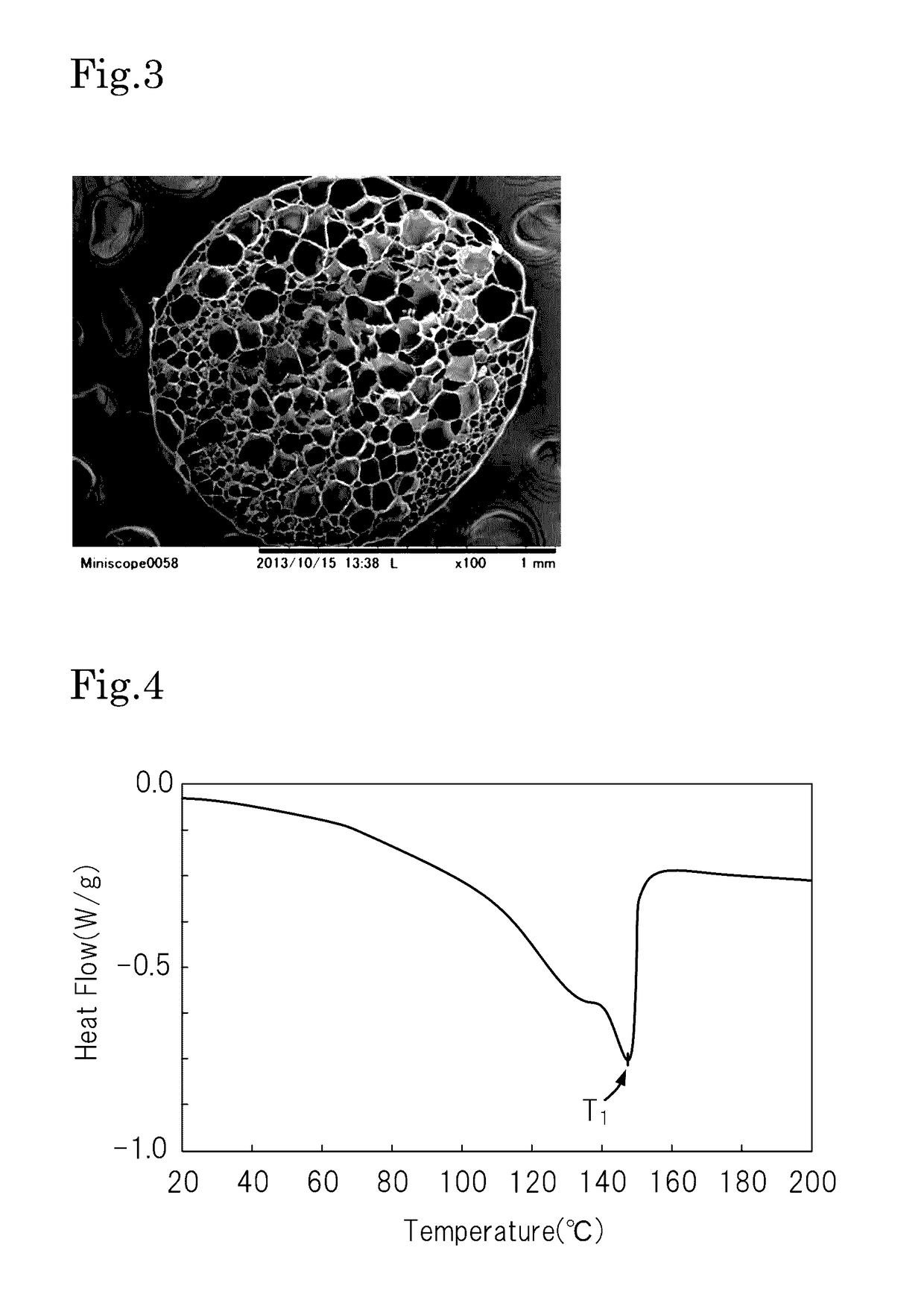Polyolefin resin particles, polyolefin resin foamed particles, and method for producing polyolefin resin foamed particles
- Summary
- Abstract
- Description
- Claims
- Application Information
AI Technical Summary
Benefits of technology
Problems solved by technology
Method used
Image
Examples
example
[0056]The present invention will be described in more detail with reference to examples below, but the present invention is not limited to the examples.
Evaluation
[0057]The resin particles and the expanded beads produced in Examples and Comparative Examples were subjected to the following evaluation.
DSC
[0058]The resin particles and the expanded beads produced in Examples and Comparative Examples were subjected to differential scanning calorimetry (DSC). The measurement device used was a heat flux differential scanning calorimeter (Model DSCQ 1000, produced by TA Instruments, Ltd.).
[0059]For the resin particles, approximately from 1 to 3 mg of the specimen (resin particles) was placed in the measurement device, and according to JIS K7121 (1987), the specimen was heated from 20° C. to 200° C. at a heating rate of 10° C. / min (i.e., the first heating), then cooled from 200° C. to 20° C. at a cooling rate of 10° C. / min, and then further heated from 20° C. to 200° C. at a heating rate of 1...
example 1
[0078]Pellets of an ethylene-propylene copolymer (polypropylene resin) having a melting point of 142° C. and a melt mass flow rate (MFR) of 5 g / 10 min and zinc borate in an amount of 500 ppm based on the mass of the pellets were placed in an extruder (inner diameter: 40 mm) set at a temperature of 200° C., and melt-kneaded, and the melt-kneaded product was extruded to produce an extruded product in a strand form having a diameter of 1.25 mm. The extruded product in a strand form was cut in a length providing a length / diameter ratio of 2 (longer diameter: 2.5 mm) to produce mini-pellets. The average mass of the minute pellet was 1.0 mg per one pellet.
[0079]The minute pellets were exposed to liquid nitrogen, and then pulverized by passing through a pulverizer (Spiral Mill SP-420, a trade name, produced by Seishin Enterprise Co., Ltd.) having been sufficiently cooled, so as to provide preliminary resin particles. The pulverization condition was a clearance of 0.5 mm, a rotation number ...
example 2
[0082]Resin particles and expanded beads of Example 2 were obtained in the same manner as in Example 1 except that the preliminary resin particles PASS were used instead of the preliminary resin particles ON.
PUM
| Property | Measurement | Unit |
|---|---|---|
| Temperature | aaaaa | aaaaa |
| Temperature | aaaaa | aaaaa |
| Temperature | aaaaa | aaaaa |
Abstract
Description
Claims
Application Information
 Login to View More
Login to View More - R&D
- Intellectual Property
- Life Sciences
- Materials
- Tech Scout
- Unparalleled Data Quality
- Higher Quality Content
- 60% Fewer Hallucinations
Browse by: Latest US Patents, China's latest patents, Technical Efficacy Thesaurus, Application Domain, Technology Topic, Popular Technical Reports.
© 2025 PatSnap. All rights reserved.Legal|Privacy policy|Modern Slavery Act Transparency Statement|Sitemap|About US| Contact US: help@patsnap.com



